As discussed previously, horror is meant to frighten, scare, or make the reader feel ill at ease. Horror stories typically explore themes related to demons, spirits, death, and the afterlife. The horror genre in all its forms makes us confront our fears and tries to rattle us in order to make us think. Now let's look at the horror sub-genres.

Horror doesn’t have as many sub-genres as fantasy or science fiction. It tends to be more difficult to break down into sub-categories. The following is not a comprehensive list (and the definitions are intentionally brief), but should give you a better understanding of the more common horror sub-genres out there.
Body Horror
Body horror is horror that puts a particular emphasis on the distortion of the body via transformations, deformations, degeneration, etc. Body horror is about the loss of control and is not necessarily gory.
For example, Helpmeet by Naben Ruthnum, Wilder Girls by Rory Power, and The Troop by Nick Cutter.
Cosmic Horror
Cosmic horror pits the insignificance of the human experience against the unknowable elements of nature and the universe.
For example, Ring Shout by P. Djeli Clark, The Ballad of Black Tom by Victor LaValle, and Sister, Maiden, Monster by Lucy A. Snyder.
Folk Horror
Folk horror relies on elements of folklore (such as a rural setting, isolation, superstition, etc.) to unsettle the reader. It often involves an “outsider versus old-world beings or beliefs” framework.
For example, The Twisted Ones by T. Kingfisher, The Lonely by Andrew Michael Hurley, and Ghost Wall by Sarah Moss.
Gothic Horror
Gothic horror tends to be dark stories that focus specifically on death, dread, mystery, and fear. They strive to create a sense of menace and sinister pasts.
For example, Mexican Gothic by Silvia Moreno-Garcia, What Moves the Dead by T. Kingfisher, and We Have Always Lived in the Castle by Shirley Jackson
Occult Horror
Occult horror focuses on rituals designed to obtain secret knowledge or power. Typically this includes witchcraft, spiritualism, black magic, or secret cults.
For example, The Book of the Most Precious Substance by Sara Gran, Slewfoot by Brom, The Necromancer’s House by Christopher Buehlman.
Psychological Horror
Psychological horror is about mental trauma and agony. It elicits paranoia, self-doubt, and suspicion. It does not need much (or any) physical violence.
For example, House of Leaves by Mark Z Danielewski, Wonderland by Zoje Stage, and I’m Thinking of Ending Things by Iain Reid.
Slasher Horror
Slasher horror is physically violent and descriptive of that violence. These stories are typically about punishment and revenge.
For example, My Heart is a Chainsaw by Stephen Graham Jones, My Sister, the Serial Killer by Oyinkan Braithwaite, and You’re Not Supposed to Die Tonight by Kalynn Bayron.
Supernatural Horror
Supernatural horror, as the name suggests, focuses on supernatural beings or abilities (ghosts, werewolves, vampires, etc.)
For example, The Good House by Tananarive Due, Bad Cree by Jessica Johns, and Stolen Tongues by Felix Blackwell.
Survival Horror
Survival horror is about being isolated from outside help and having to survive the environment the character(s) are in as well as whatever horror is plaguing them.
For example, The Troop by Nick Cutter, The Terror by Dan Simmons, and The Hunger by Alma Katsu.
Those are some of the more common sub-genres of horror out there. Understanding the differences between them can help you focus your story or it can make you want to blur the line between two or more of the sub-genres.
If you have any questions, or think I’ve missed any important sub-genres, let me know in the comments.

1 thought on “An Overview of the Horror Sub-Genres”